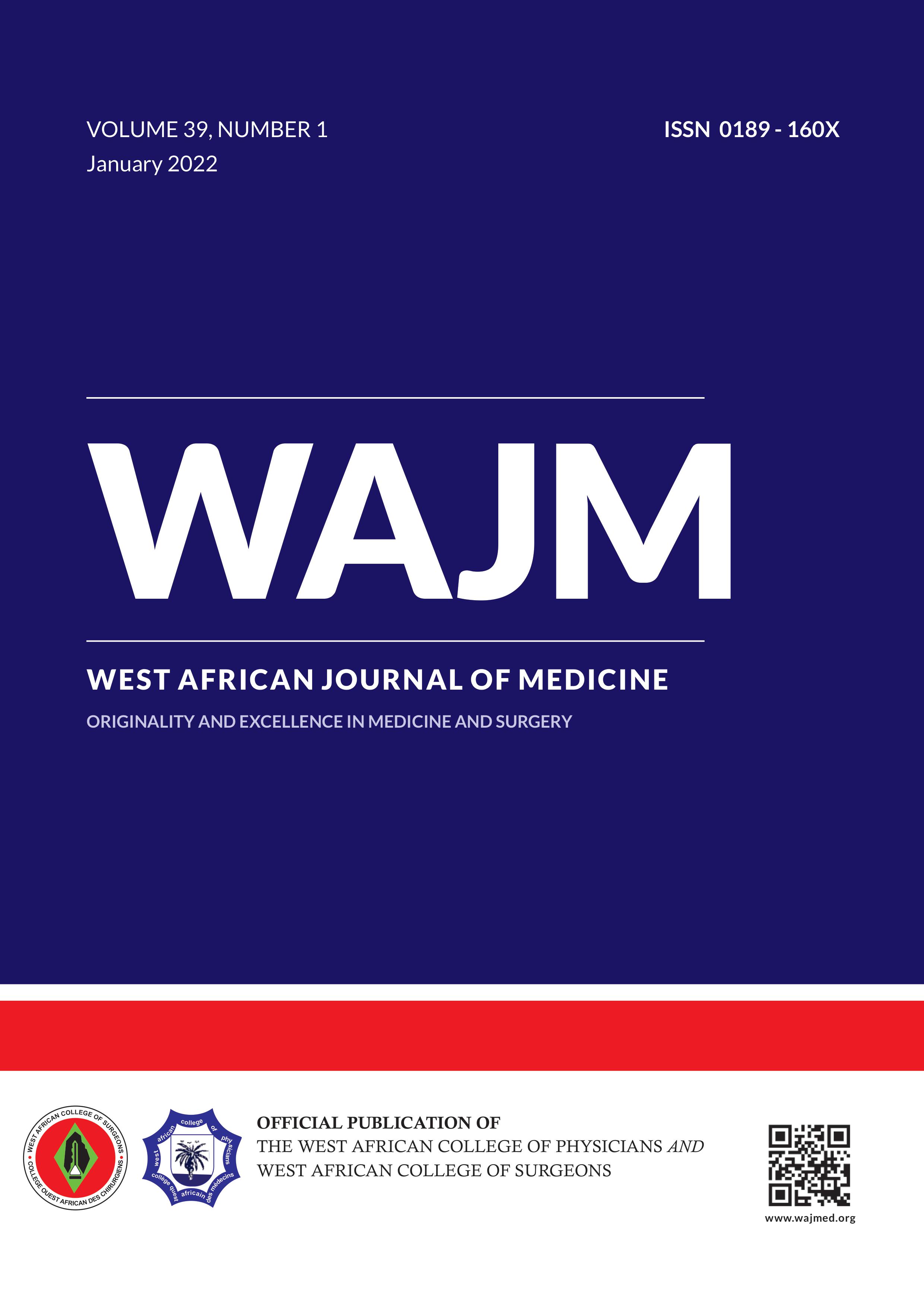ORIGINAL: Multiple Blood Transfusion may contribute to Abnormal Liver and Endocrine Functions in Adults with Sickle Cell Anaemia
West Afr J Med. 2022 January; 39(1): 39-44
Keywords:
Iron overload; Multiple blood transfusion; Sickle cell anaemia; organ dysfunction; serum transferrin.Abstract
Background: The study evaluated the effect of multiple blood transfusions on the prevalence of iron load and its effects on organ functions in patients with sickle cell anaemia (SCA).
Methodology: Sixty-seven multiply transfused SCA subjects and 58 non-multiply transfused SCA controls were investigated. Serum ferritin, insulin, growth hormone (GH), thyroid stimulating hormone (TSH), triiodothyronine (T3) and thyroxine (T4) were measured by the ELISA method while plasma alanine transaminase (ALT) was measured spectrophotometrically.
Results: The median serum ferritin level was 364.97 (142.5-579.3) ng/ml and that of ALT was 12.20 (7.4-16.7) IU/l in the subjects and were significantly higher compared with 115.31 (81.3-285.6) ng/ml and 7.74(5.9-9.9) IU/l obtained in the controls (p <0.001 in each case). TSH was significantly lower 1.45 (0.4-2.9) µIU/ml in subjects compared with 2.12 (0.7-3.6) µIU/ml obtained in the controls (p = 0.034). The mean values for T4 in the subjects was 10.19 ± 1.5 µg/dl and was significantly higher compared with that of the controls of 9.57 ± 1.5 µg/dl (p = 0.026). However, there were no significant differences in the mean values of T3, GH and Insulin between the cases and the controls. There was a strong correlation between serum ferritin level and the number of units of blood transfused in the subjects (r = 0.575, p < 0.001).
Conclusion: The study found high serum ferritin level in multiply transfused SCA patients and which also correlated with the number of blood units transfused.
Authors O A Adeyeye 1, L Salawu 1 2

